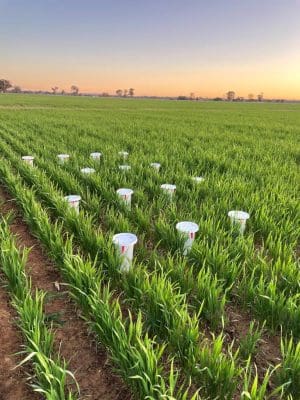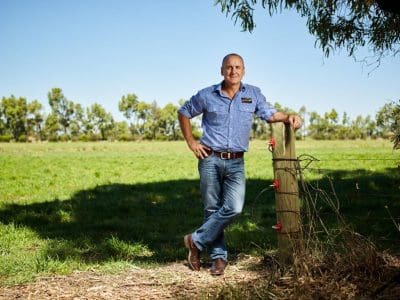ON-FARM research conducted by Incitec Pivot Fertilisers across southern Australia has demonstrated topdressing with Green Urea NV significantly reduces ammonia volatilisation losses in winter crops and pastures.
 The research trials were undertaken in 2024 at 11 winter cropping sites throughout South Australia, Victoria, and southern NSW, along with three pasture sites in Victoria and one pasture site in Tasmania.
The research trials were undertaken in 2024 at 11 winter cropping sites throughout South Australia, Victoria, and southern NSW, along with three pasture sites in Victoria and one pasture site in Tasmania.
The trials compared the performance of urea, the most common form of nitrogen fertiliser, to Green Urea NV, measuring the effectiveness in reducing ammonia (NH3) volatilisation and N losses.
IPF’s Green Urea NV contains a urease inhibitor or enhanced efficiency fertiliser (EEF).
It is a spray-on coating which slows the activity of a specific biological process involved in the conversion of urea to ammonium.
This gives time for urea to be incorporated by rain or irrigation, resulting in less losses and more retention of N in the system for crop and pasture production.
IPF technical agronomist Lee Menhenett said the trials enabled IPF to collect localised data across a range of soil types and geographical areas, over multiple topdress applications.
“No product reduces ammonia volatilisation and N losses completely, however our measurements showed Green Urea NV reduced losses across all sites by an average of 77 percent for the June application, 82pc for the July application and 76pc for the August application,” Mr Menhenett said.
“Using Green Urea NV enables farmers to apply N when conditions suit, up to 14 days ahead of a rain event, without losing efficiency.”
Winter cropping sites were located at Ungarra, Arthurton, Hopetoun, Lake Bolac, Derby, Howlong, Longerenong, Naracoorte, Murchison East, and Kanagulk.

IPF technical agronomist Lee Menhenett. Photo: IPF
Winter crops including wheat, barley and canola received three top dresses in mid-June, mid-July and mid-August with N applied at a rate of 46 kg N/ha.
The pasture sites at Lardner, Coleraine, and Tongala received two top dressings in early August and September/October with N applied at a rate of 46 kg N/ha.
The Tasmanian site was located at Hagley and top dressed in January.
At each site, volatilisation losses/emissions were measured using a closed system designed by IPF R&D agronomist Dr Robert Impraim.
Mr Menhenett said the results are a timely reminder to growers that urea is volatile.
“The trials have demonstrated the loss of N from the system and the lost yield opportunity are both real and significant from an economic perspective and something growers need to consider,” Mr Menhenett said.
The trials are one of the many R&D projects IPF is running to help drive efficiency, sustainability, and innovation in the fertiliser industry, supporting greater productivity for farmers.
IPF is hosting a one-hour webinar on April 4 from 9am to discuss the southern Australia ammonia volatilisation trial results and how to minimise N losses.
Source: IPF